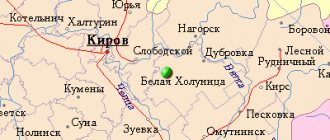KAMENSK-URALSKY
‹
›
Kamensk cannons, cast almost three centuries ago, still glorify the city. In 1733, cannons were cast at the Kamensky State Factory for the Second Kamchatka Expedition of Vitus Bering. The historical fact became the reason for the arrival of the TV crew.
The television company, together with the Russian Geographical Society, is preparing a series of programs “On the routes of the Great Northern Expedition of Vitus Bering”, which will be aired in the “Non-Fact” series.
The “Nefakt” program has been airing for 4.5 years on the Zvezda TV channel. Each issue consists of individual stories, often highlighting little-known facts. “The fate of Vitus Bering is just right for our format,” Yulia Zamolozhinskaya, producer of the “Nefakt” program on the Zvezda TV channel, said about the idea of the project. – Bering is known as a great traveler, geographer and the fact that he discovered the Bering Strait. The ten-year expedition became an important stage in the development of Russian science. Its participants collected information about the flora, fauna, and ethnography of the regions through which the route passed. We will talk about this in four episodes. About the role of Kamensk - in the third.” The issue will be released in October 2022.
On August 25, the “star” guests visited the Revun threshold, removed metal casting in a forge, and visited the local history museum. We captured the panorama of the city from the Cannon monument and ended the TV trip with a walk along the Iset Canyon.
The main events of the shooting take place in the museum. According to the scenario, senior researcher of the museum Lyubov Zenkova conducts a tour for the host of the program, Ararat Keshchyan.
The cannons cast at the Kamensky plant in 1733 for the Second Kamchatka Expedition of Vitus Bering are a museum treasure. With this order, Kamensk-Uralsky became involved in the most important event in the history of Russia in the mid-19th century - the organization of the Great Expedition. The fate of Vitus Bering is tragic; according to one version, he died of scurvy. The commander was buried on an island in the Sea of Okhotsk, which was later named in his honor, and the guns were buried with him. Thanks to this circumstance, they have survived to this day. Now the whole world knows about Kamensk guns.
Kamensk guns might not have made it to the expedition
The production of cannons in 1733 was a huge question mark. In the spring of 1733, there was a strong flood on Kamenka, the dam was washed away, and the state-owned plant was stopped for several months. The execution of a large order was disrupted and transferred to the Uktus plant. Commander Bering was not satisfied with the quality of cast iron products. The assault began at the Kamensky plant: they urgently began to carry out the tsar’s order. The cannons were cast by the end of the year, although initially the order had to be completed by the summer.
In Kamensk, TV crews were surprised not only by the history, but also by the architecture and nature. “You have a cozy city, many old buildings in good condition, and I have something to compare with. The nature around is incredibly beautiful,” Yulia Zamolozhinskaya shared her impressions.
The head of the city, Alexey Shmykov, welcoming guests at the local history museum, recommended that during a boat trip they pay attention to another attraction: a bridge of an unusual engineering design, designed by Moscow professor Vasily Rosnovsky. “Three ships sail along the Iset Canyon, which, by the way, is 350 million years old, all of them are in demand, this once again confirms the interest of guests and residents,” the head emphasized.
The gun united everyone
The head of the city recalls his first meeting with one of the initiators of the project: “2017. The guests became interested in our city because cannons for Vitus Bering were cast there. For a year they traveled with the Kamensk cannon along the expedition route. This is how a friendship with Ildar Mamatov began. By promoting the history of the expedition, he is promoting our city.”
“It’s surprising, but true: the cannon connects the cities,” stated Ildar Mamatov, a member of the Russian Geographical Society. — By the way, Kamensk cannons were used during the expedition only for peaceful purposes. They shot when there was fog so they could see each other's ships.
The mastermind behind the project has a dream: to make copies of Kamensk cannons and donate them to museums in 100 cities participating in the route of the Great Northern Expedition. Kamensk-Uralsky will connect all cities, from Vyborg to Petropavlovsk-Kamchatsky.
Kamensk cannons, cast almost three centuries ago, still glorify the city.
In 1733, cannons were cast at the Kamensky State Factory for the Second Kamchatka Expedition of Vitus Bering. The historical fact became the reason for the arrival of the TV crew.
The television company, together with the Russian Geographical Society, is preparing a series of programs “On the routes of the Great Northern Expedition of Vitus Bering”, which will be aired in the “Non-Fact” series.
The “Nefakt” program has been airing for 4.5 years on the Zvezda TV channel. Each issue consists of individual stories, often highlighting little-known facts. “The fate of Vitus Bering is just right for our format,” Yulia Zamolozhinskaya, producer of the “Nefakt” program on the Zvezda TV channel, said about the idea of the project. — Bering is known as a great traveler, geographer and the fact that he discovered the Bering Strait. The ten-year expedition became an important stage in the development of Russian science. Its participants collected information about the flora, fauna, and ethnography of the regions through which the route passed. We will talk about this in four episodes. About the role of Kamensk - in the third.” The issue will be released in October 2022.
On August 25, the “star” guests visited the Revun threshold, removed metal casting in a forge, and visited the local history museum. We captured the panorama of the city from the Cannon monument and ended the TV trip with a walk along the Iset Canyon.
The main events of the shooting take place in the museum. According to the scenario, senior researcher of the museum Lyubov Zenkova conducts a tour for the host of the program, Ararat Keshchyan.
The cannons cast at the Kamensky plant in 1733 for the Second Kamchatka Expedition of Vitus Bering are a museum treasure. With this order, Kamensk-Uralsky became involved in the most important event in the history of Russia in the mid-19th century - the organization of the Great Expedition. The fate of Vitus Bering is tragic; according to one version, he died of scurvy. The commander was buried on an island in the Sea of Okhotsk, which was later named in his honor, and the guns were buried with him. Thanks to this circumstance, they have survived to this day. Now the whole world knows about Kamensk guns.
Kamensk guns might not have made it to the expedition
The production of cannons in 1733 was a huge question mark. In the spring of 1733, there was a strong flood on Kamenka, the dam was washed away, and the state-owned plant was stopped for several months. The execution of a large order was disrupted and transferred to the Uktus plant. Commander Bering was not satisfied with the quality of cast iron products. The assault began at the Kamensky plant: they urgently began to carry out the tsar’s order. The cannons were cast by the end of the year, although initially the order had to be completed by the summer.
In Kamensk, TV crews were surprised not only by the history, but also by the architecture and nature. “You have a cozy city, many old buildings in good condition, and I have something to compare with. The nature around is incredibly beautiful,” Yulia Zamolozhinskaya shared her impressions.
The head of the city, Alexey Shmykov, welcoming guests at the local history museum, recommended that during a boat trip they pay attention to another attraction: a bridge of an unusual engineering design, designed by Moscow professor Vasily Rosnovsky. “Three ships sail along the Iset Canyon, which, by the way, is 350 million years old, all of them are in demand, this once again confirms the interest of guests and residents,” the head emphasized.
The gun united everyone
The head of the city recalls his first meeting with one of the initiators of the project: “2017. The guests became interested in our city because cannons for Vitus Bering were cast there. For a year they traveled with the Kamensk cannon along the expedition route. This is how a friendship with Ildar Mamatov began. By promoting the history of the expedition, he is promoting our city.”
“It’s surprising, but true: the cannon connects the cities,” stated Ildar Mamatov, a member of the Russian Geographical Society. — By the way, Kamensk cannons were used during the expedition only for peaceful purposes. They shot when there was fog so they could see each other's ships.
The mastermind behind the project has a dream: to make copies of Kamensk cannons and donate them to museums in 100 cities participating in the route of the Great Northern Expedition. Kamensk-Uralsky will connect all cities, from Vyborg to Petropavlovsk-Kamchatsky.
0
Lost elements have been returned to the “Cannon” monument in Kamensk-Uralsky
Kamensk-Uralsky, September 28 – IA Vremya Press. Thanks to a grant from the Sinara charitable foundation, the lost elements have been returned to the Cannon monument in Kamensk-Uralsky - an artillery ramrod (bannik) and an artillery cannonball.
Representatives of the Sinarsky Pipe Plant (SinTZ), part of the Pipe Metallurgical Company (TMK), took part in the ceremony.
The cannon was installed on the banks of the Kamenka River in 1967. It is a monument to the workers of the Kamensk State Iron Foundry, which cast guns that took part in military battles in the 18th-19th centuries. The Sinarsky Pipe Plant took a direct part in the creation of the monument. The electromechanical plant took over the construction work, and the gun was cast at SinTZ.
The author of the monument is Vladimir Permyakov, at that time an artist at SinTZ; the project engineers were the head of the architectural and construction bureau of the radio plant, Alexander Bragin, and the head of the construction sector in the design department of SinTZ, Fedor Gorshkov.
In the 1990s, two elements of the gun were lost - the artillery ramrod and the artillery core. Now the parts have been restored and returned to their rightful place. The city socio-cultural became the winner of the grant competition of the Sinara Charitable Foundation in the “Cultural Heritage” category.
– Thanks to the winning grant from the Sinara Charitable Foundation, we were able to organize the production of elements and carry out installation. The name came from the theme of the project. What is lost must be returned. The exhibition must be complete,” noted Pavel Leich, deputy director of the SCC.
The lost symbol of the city was returned as part of the V city historical and cultural festival “Muses and Guns”. This year it was held in two locations. A rock concert took place at the SCC site. In the old part of the city, near the Kamensky Pond dam, a quest game “Rudoznatsy”, excursions, a cannon yard championship and a rally were held in honor of the return of elements of the city’s symbol to their place.
Representatives of the city administration and enterprises participating in the project, the local history community, and townspeople gathered at the cannon. The Director of Human Resources Management of SinTZ, the representative of the board of the Sinara Charitable Foundation, Sergei Lyakhov, and the head of the Kamensk-Ural urban district, Alexey Gerasimov, addressed the audience with welcoming words. The Sinara Charitable Foundation and the Sinara Pipe Plant were awarded letters of gratitude from the Department of Culture of the Kamensk-Ural Urban District.
– This is the history of our city, which we must preserve and pass on to our descendants so that they remember what contribution the city made to the history of the country. And this contribution is worthy - Kamensk-Uralsky was and remains the stronghold of the state,” emphasized Alexey Gerasimov.
In a solemn atmosphere, the installation of the banner and the core was carried out - each element weighs about 20 kilograms. But first, everyone could take a photo with them as a souvenir.
– The cannon is the main symbol of Kamensk-Uralsky, its historical accuracy has been restored. This became possible thanks to a grant from the Sinara Charitable Foundation. The Foundation has been holding a grant competition for non-profit organizations since 2007. During this time, hundreds of projects received support, including in Kamensk-Uralsky,” said Sergei Lyakhov. – The return of the historical appearance is important both for the city and for the Sinarsky Pipe Plant - the cannon was manufactured at our enterprise more than half a century ago. The implementation of the project is the preservation of the history of the city for future generations of Kamenets.
The Sinara Charitable Foundation, which turned 20 this year, is the sole operator of the charitable activities of TMK enterprises and the Sinara Group. The Foundation implements more than 20 personalized projects and events, uniting thousands of people throughout Russia - grant recipients, partners, experts, volunteers.
Photo: SinTZ press service








